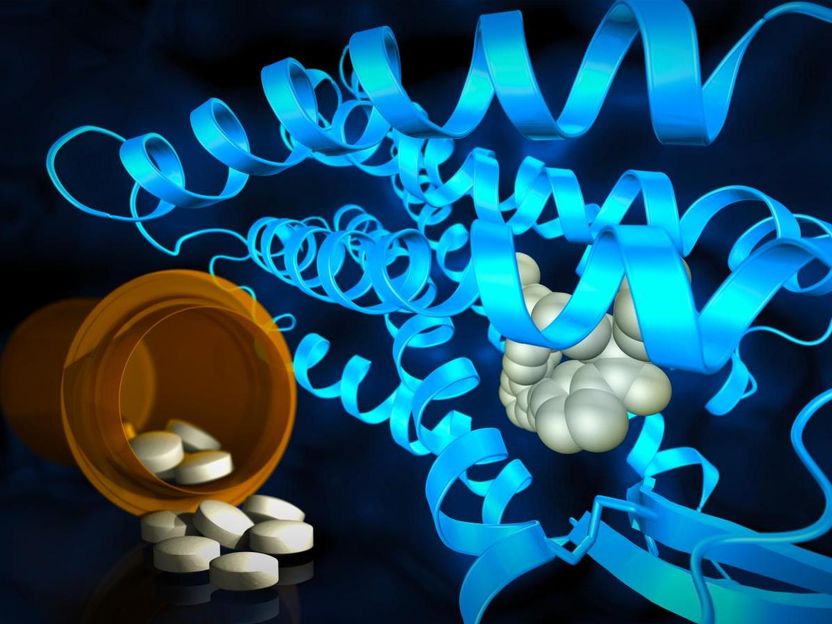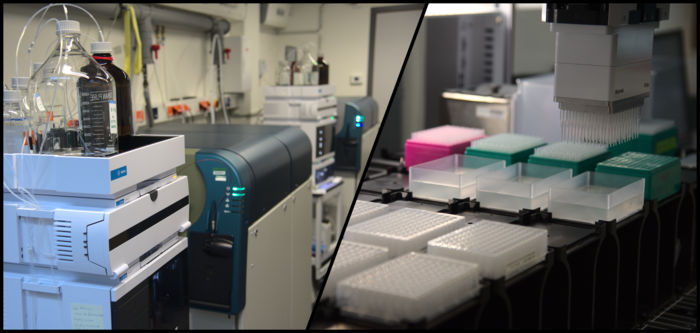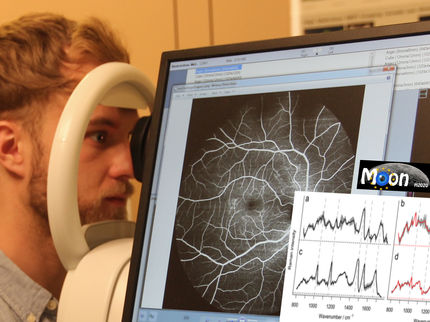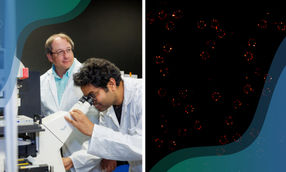Seeing a diagnosis: How an eye test could aid Alzheimer's detection
A simple and inexpensive eye test could aid detection and diagnosis of major neurological diseases such as Alzheimer's at an earlier stage than is currently possible, according to new research by UCL scientists. The research, led by Professors Francesca Cordeiro & Stephen Moss and published in Cell Death & Disease, demonstrates a new technique that enables retinal, and therefore brain cell death, to be directly measured in real time. The method, demonstrated in an animal model, could not only refine diagnosis of neurodegenerative disorders and help track disease progress; it could also aid the assessment and development of new treatments.
The technique uses fluorescent markers that attach themselves to the relevant cells and indicate the stage of cell death. The retina is then observed using a customised laser ophthalmoscope. Until now, this kind of technique has only been used in cells in the lab, rather than in live animals. This research is therefore the first ever in vivo demonstration of retinal nerve cell death in Alzheimer's Disease.
Professor Cordeiro, UCL Institute of Ophthalmology, said: "The death of nerve cells is the key event in all neurodegenerative disorders – but until now it has not been possible to study cell death in real time. This technique means we should be able to directly observe retinal nerve cell death in patients, which has a number of advantages in terms of effective diagnosis. This could be critically important since identification of the early stages could lead to successful reversal of the disease progression with treatment.
"Currently, the biggest obstacle to research into new treatments for neurodegenerative diseases is the lack of a technique where the brain's response to new treatments can be directly assessed – this technique could potentially help overcome that."
Although this paper outlines the technique in animal models (rats and mice), Professor Cordeiro's team are further along with work using the same technique to detect and assess glaucoma, and will be conducting their first patient trials later this year.
Topics
Organizations
Other news from the department science

Get the analytics and lab tech industry in your inbox
By submitting this form you agree that LUMITOS AG will send you the newsletter(s) selected above by email. Your data will not be passed on to third parties. Your data will be stored and processed in accordance with our data protection regulations. LUMITOS may contact you by email for the purpose of advertising or market and opinion surveys. You can revoke your consent at any time without giving reasons to LUMITOS AG, Ernst-Augustin-Str. 2, 12489 Berlin, Germany or by e-mail at revoke@lumitos.com with effect for the future. In addition, each email contains a link to unsubscribe from the corresponding newsletter.
Most read news
More news from our other portals
Last viewed contents
Odorant shape and vibration likely lead to olfaction satisfaction

Unexpected protein structure findings could lead to new therapies
Routine blood test predicts how long cancer patients will survive

Global guidelines to improve the quality of microscopy images in scientific publications

Breakthrough in protein research: Toolkit makes protein design faster and more accessible - What used to take weeks can now be completed in a day or less

Femtosecond-fieldoscopy accesses molecules fingerprints at near-infrared spectral range - "This research...has potential applications across various fields, including chemistry and biology, where precise molecular detection is essential"

Human environmental genome recovered in the absence of skeletal remains - Innovative approach permits the identification of DNA in samples of environmental material

Machine learning model uses blood tests to predict COVID-19 survival - Levels of 14 proteins in the blood of critically ill COVID-19 patients are associated with survival

























































